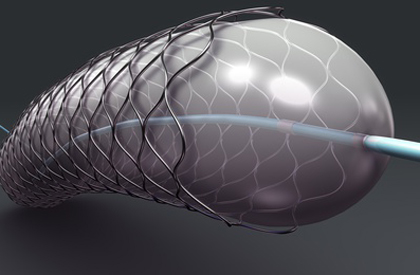Transcatheter aortic valve replacement (TAVR) using the ACURATE neo device depends, largely, on correct patient selection and appropriate oversizing. The individual anatomy of each patient, namely periannular and aortic root calcification, must be taken into account. The ACURATE neo valve (Symetis/Boston, Ecublens, Switzerland) is a new-generation self-expanding valve characterized by a stent design shaped as an X…
Leaflet Laceration, an Extreme Measure to Avoid Coronary Occlusion After TAVR
Intentional leaflet laceration before mounting the prosthesis on the release system, so as to reduce the risk of acute coronary occlusion, seems a desperate maneuver to force transcatheter aortic valve replacement (TAVR). Unfortunately, we will always encounter patients without other real choice; in those cases, creativity may start as compassionate treatment and then be upgraded…
EuroPCR 2018 | SAPIEN 3 in bicuspids
First generation TAVR procedures performed on patients with bicuspid aortic valve stenosis have rendered suboptimal outcomes. In addition, studies on new generation devices, such as the SAPIEN 3, have systematically excluded these patients from their protocols. Therefore, we are missing information about TAVR on bicuspid aortic valve stenosis patients. This study compared SAPIEN 3 TAVR…
Is TAVR Durable Beyond 5 Years?
Courtesy of Dr. Carlos Fava. The benefits derived from transcatheter aortic valve replacement (TAVR) are clear and self-evident, and its progressively better outcomes are due to better patient selection, greater operator experience, and the development of new valves that enhance procedural safety and complexity. However, the question of durability remains a major unresolved issue, particularly now…
Baseline Pulmonary Hypertension Should Not Preclude TAVR
Pulmonary hypertension (PH) in patients with severe aortic stenosis undergoing transcatheter aortic valve replacement (TAVR) should not preclude this procedure. In fact, TAVR will resolve this condition in most cases. More than three quarters of patients undergoing TAVR have some level of PH, though this has not been associated to increased mortality, according to this…
Morbidity and Mortality During Authorization Wait-Times for TAVR
For this Canada-based study, the increased number of patients who required a transcatheter aortic valve replacement (TAVR) may have come hand in hand with an equal increase in healthcare financing, so as to cover procedural costs. In spite of that, the wait-time between the formal request for authorization and the actual procedure was 3 months, and…
Delayed Coronary Obstruction After TAVR: A Complication We Had Not Considered
Delayed coronary obstruction (after TAVR, outside the cath lab) is a rare complication with high mortality rates, not unlike acute obstruction. Cardiologists should be expectant and, upon the slightest suspicion of this complication, patients should be brought back to the cath lab for a coronary angiography. Occlusion immediately after implant release has been well-studied and…
NOTION: 5-Year Outcomes of TAVR vs. Surgery in Low-Risk Patients are Promising
At 5 years, there were no differences in all-cause death, stroke, acute myocardial infarction, or all of these combined between low-risk, elderly patients who underwent transcatheter aortic valve replacement (TAVR) or conventional surgery. Taking into account reports from previous years, these results are not at all surprising. NOTION enrolled an all-comers population that was 70 years old…
Next-Day Discharge after TAVR: Is It Viable?
Next-day discharge after transfemoral transcatheter aortic valve replacement (TAVR) might be viable, with no major complications at 30 days or one year, compared against patients with longer hospital stay. We only have to consider a few factors that will help us choose the most adequate patients for this modality without compromising safety. One of the main advantages…
Red Light for TAVR in Low Surgical Risk Patients
A new study raises an alarm against expanding transcatheter aortic valve replacement (TAVR) procedures to low surgical risk patients, since 2 year mortality seems higher in these patients with TAVR, compared to conventional surgery. This study will soon be published in Catheter Cardiovasc Interv. Expanding TAVR to low risk patients might involve risks we have not…









